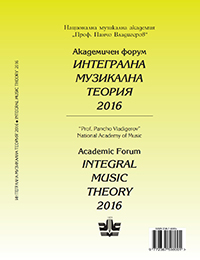The Poetry of Franz Schubert’s Dances
The Poetry of Franz Schubert’s Dances
The A flat Waltzes Op.9 (D 365), Nos.1 – 13
Author(s): Nicholas RastSubject(s): Theatre, Dance, Performing Arts, Fine Arts / Performing Arts, Music
Published by: Издателство НМА „Проф. Панчо Владигеров”
Keywords: anacrusis; ornamentation; Schubert waltzes; Schenkerian analysis; obligatory registe; hypermetric analysis; poetic metre; musical form;
Summary/Abstract: Taking Martin Chusid’s observation as a cue that there is a strong sense of homogeneity in the dances comprising the first group of Op. 9. To a considerable extent this results from melodic ideas that are similar. This paper explores the extent to which the opening group of thirteen waltzes (all in A flat major) comprise a connected unit. Led by the melodic similarities noted by Chusid, the interaction of voice-leading detail (particularly the use of obligatory register) and hypermetric structure reveals a dynamic conflation of different formal schemata. The twopart form at the second level of the middleground (A: dances 1 – 6; B: dances 7 – 13) subsumes a three-part form with introduction at the first middleground level (a: dances 1 – 3; A: dances 4 – 8; B: dances 9 – 11; C: dances 12 & 13). The three introductory dances (a) represent a large-scale elaboration of the anacrusis with which all but the twelfth dance begin. Ultimately, then, Schubert’s ingenious and elegant solutions in these pieces lead ineluctably to the conclusion that, as Maurice Brown wrote, ‘Schubert’s elevation of the short dance is comparable to his elevation of the Lied.
Journal: Академичен форум »Интегрална музикална теория«
- Issue Year: 2017
- Issue No: 1
- Page Range: 28-41
- Page Count: 14
- Language: English

